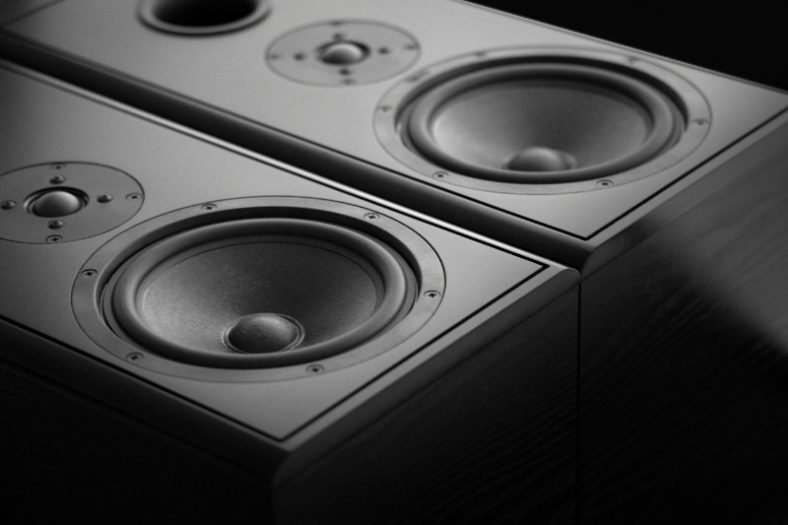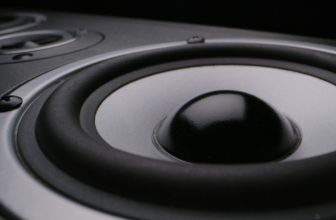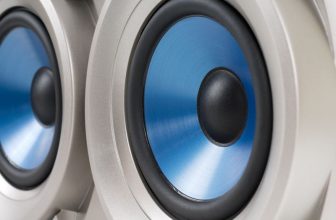RMS and Peak Watts – What’s the difference?

RMS measures the number of watts a speaker can handle continuously, whereas peak measures the number of watts a speaker can handle before failing. RMS is a daily-usage power reference measured in watts, while peak power refers to the maximum amount of watts a speaker can take during a brief period.
Outside of audio engineering, RMS and peak watts matter because they allow you to make a more informed decision before buying a new set of speakers. A watt is an electric-circuit unit that describes the rate of power flow. The more watts, the more power a circuit can handle. In simpler terms, speakers with more watts can play music louder than speakers with fewer watts.
If you look into the box of a new set of speakers, you’ll notice wattage is usually listed as RMS, peak, or both. But what does this mean exactly? And does it make a difference?
Contents
RMS or peak power? Which is the most important?
Let’s imagine the following scenario: you’re on the market looking for a new set of speakers and you’re down to two options. One has an RMS of 140 watts and a 300-watt peak. The other has an RMS of 100 watts and a 500-watt peak. Which one should you get?
In this case, the answer is the first pair of speakers. Why? Because even though it has inferior peak power, it has more RMS watts. RMS power is more important than peak power because it offers a more accurate description of what a set of speakers is truly capable of.
Many specialists believe that there’s no valid reason for brands to list peak power in the specs of their speakers. Companies like REL Acoustics even take pride in favoring RMS power over peak power when marketing their products, as seen in the video below.
In the audio-engineering community, there’s an overall belief that listing peak power in the specs of speakers is, fundamentally, a commercial strategy. It’s mainly about putting that high number in there to attract potential customers.
Some consumers may feel tempted to buy the 100-RMS/500-peak speakers instead of the 140-RMS/300-peak speakers because they don’t know the difference between RMS and peak power. Naturally, they go for the product with the most watts in the box!
The next time you’re trying to buy a new sound system, pay close attention to the RMS wattage and try to ignore peak watts, especially if they’re suspiciously high.
Why exactly are peak watts irrelevant in comparison to RMS watts?
RMS power describes sound performance accurately because it measures the number of watts a speaker can endure over time. This means that, if you have a set of speakers with 200-RMS, you can power them with up to 200 watts continuously without damaging the equipment.
On the other hand, peak power describes sound performance in a relatively misleading way. It’s merely a measure of the maximum power a set of speakers can handle during a very short period, i.e., a peak. In audio, a peak is the loudest point in a signal. If you power a set of speakers with 300-peak with 300 watts or more for a while, you’ll end up damaging the equipment.
Visualizing the structure of the flow of power in sound is helpful to understand the technical differences between RMS and peak power. This short video sheds some light on the subject:
The flow of power is measured in cycles and has a positive peak and a negative peak per cycle. This means that the sinewave only peaks two times per cycle. So, representing sound performance per its peaks isn’t exactly accurate. It would be like reviewing a two-hour movie after just watching the first five minutes.
Peaks last an ineffably short amount of time. For the most part, sound signals aren’t peaking at all! That’s why it’s so misleading to pay attention to peak powers when buying a new set of speakers and why, according to many, peak watts are essentially there for marketing purposes.
How much power do your speakers need?
With 200 watts, you should have more than enough power to listen to any genre of music at home as loud as you want to. If you’re not a big fan of house parties and want to relax while listening to some soft tunes, 50 watts should be enough.
As a rule of thumb, more wattage means more power, which is always better. However, you don’t need to spend a fortune on a bad set of speakers if all you want to do is to listen to a few jazz records back home.
Does more RMS power mean better sound quality?
Power affects sound quality because you want to be able to listen to music loud without experiencing distortion. But this doesn’t mean that wattage is the sole concept that defines the quality of a set of speakers.
The more wattage the better: this is true. However, it doesn’t mean that the speakers with the most RMS watts are the best in the market.
If someone asked “would you like your car to be faster?” you’d probably answer “yes.” Yet, the fastest car in the world isn’t necessarily the best. The very same line of thinking applies to speakers.
Picking out the best set of speakers involves a lot of other aspects. This includes the quality of the materials, the specific construction, the physical size, and other technical specifications such as frequency range and impedance.
Summary
Product specifications should be there to guide the consumer, but they’re often more confusing, distracting, and even misleading than helpful! The RMS vs. peak power debate is yet another example of how marketing can convince us to buy the wrong product just because we don’t understand what the specs in the box mean.
Next time you’re looking out for a set of speakers, prioritize RMS watts over peak watts and avoid powering the equipment with more than it can handle.





